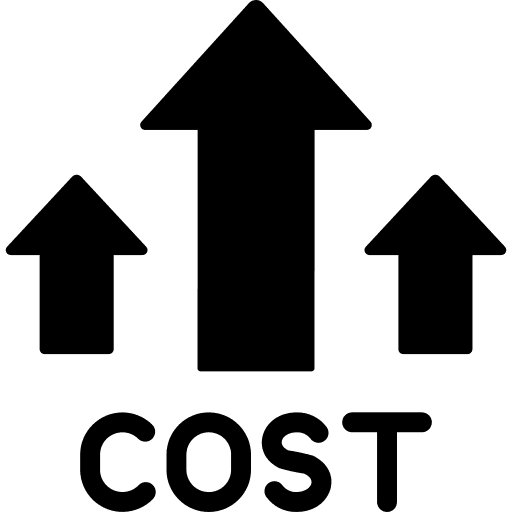Average Australian interest rates versus the market's lowest rates
| Australian interest rates December 2025 | Data |
|---|---|
| Average variable mortgage interest rate | 6.46% |
| Lowest variable rate available on Finder* | 4.99% |
| Average fixed mortgage interest rate | 5.72% |
| Lowest fixed rate available on Finder* | 4.74% |
*Lowest rates listed above are based on products from lenders with whom Finder has a commercial partnership.
Where does this data come from?
Finder maintains a home loan database that includes thousands of interest rates from lenders big and small. Our data covers the majority of the home loan market.
Our average interest rate figures are updated monthly. To get the average variable rate figure we take the average of all interest rates for loans that:
- Are for owner-occupiers
- Have principal-and-interest repayments
- Have maximum insured LVRs of 80% or higher (available for borrowers with at least 20% deposits)
This ensures our average rates reflect the types of loans that the average borrower would actually need.
If you want the current rates for different home loan types, check out the following pages:
- Fixed rate home loans
- Variable rate home loans
- Big Four bank interest rates
- Investment loan interest rates
When were mortgage rates 17% in Australia?
For many years – in fact, for over 2 decades – home loan interest rates in the double digits was normal. Rates exceeded 10% for the first time in 1974 and they then remained above 10% for over 20 years.
In 1990, they reached their peak high of 17%. This was a period of high bankruptcies as many people struggled to keep up with sky-high mortgage repayments. By 1994, interest rates dropped from the peak of 17% in January 1990 to a low of 8.75% in June 1994.
Since the mid-90s, interest rates have generally hovered between 4% and 8%, with a couple of anomolies: right after the GFC, they reached 9.6% briefly in August 2008; and right after Covid, when they dropped below 2%. Take a detailed look at historical home loan interest rates.
How home loan interest rates have changed over time
The graph below shows the lowest rate on the market each month. It's a helpful way to see just how much you can save by comparing interest rates.
If you just want to see the cheapest loans, check out our lowest home loan rates page.
Check out more detailed mortgage data on our home loans statistics page
What determines Australian interest rates?
Interest rates affect how much it costs to borrow money (and how much you can earn on money in your savings account).
Various factors combine to determine how high or low interest rates are at any time.
The Reserve Bank of Australia
Australia's Reserve Bank determines certain interest rate settings, including the official cash rate target. This is a benchmark interest rate that effects the cost of borrowing money.
When the cash rate increases, lenders pass on their higher costs to borrowers. When the cash rate falls, lenders drop rates.
The RBA determines the cash rate based on multiple factors.
- The economy. If economic growth is slow, lower interest rates can boost the economy by encouraging borrowing and spending. If the economy is booming but policy makers are worried about inflation or debt bubbles, increasing rates can help cool things down.
- Inflation. When inflation is high (prices for goods are rising), the Reserve Bank may increase interest rates to decrease the supply of money and drive spending down. This helps curb inflation.
- The US Federal Reserve. Large economies like the US have big effects on smaller markets like Australia. If the US Federal Reserve (America's version of the RBA) moves interest rates up or down, Australia is likely to follow to some degree.
While the Reserve Bank sets the floor for certain interest rates, banks and lenders have a lot of flexibility to price interest rates themselves. Some lenders may drop rates to entice new customers. Others may feel that they can keep customers while lifting rates.

What's happening with Australian interest rates?
Home loan interest rates began rising rapidly in 2022 when the Reserve Bank of Australia lifted the cash rate 8 times in 8 months. Then there were 5 rate rises in 2023.
There were no rate changes from the RBA in 2024. But in 2025 the RBA started cutting rates again for the first time since 2020.
You don't have to wait for the RBA to change rates to get a better deal, though. You can ask your lender to put you on a more competitive rate. And if that doesn't work, then compare home loans and look for a better deal.
How much difference does a higher or lower interest rate make?
Even a slight variation in interest rates can make thousands of dollars of difference over the life of a home loan. For example, let’s consider 2 otherwise identical home loans with principal-and interest-repayments and 30-year loan terms. The only difference is a 50 basis point difference in the rate.
| Loan A | Loan B | |
|---|---|---|
| Interest rate | 6.00% p.a. | 6.50% p.a. |
| Loan amount | $500,000 | $500,000 |
| Monthly repayment amount | $2,998 | $3,161 |
| Total cost of loan | $1,079,191 | $1,137,723 |
| Total interest paid | $579,191 | $637,723 |
| Saving on cheaper loan | $58,532 | N/A |
As you can see, the lower interest rate of Loan A results in a saving of more than $58,000 over 30 years.
Use our home loan repayment calculator to see how a higher or lower interest rate could affect your mortgage repayments.
Frequently asked questions about home loan interest rates in Australia
Sources
Ask a question
4 Responses
More guides on Finder
-
Calculate the income needed to buy a home in any suburb in Australia
Work out how much you need to earn to buy a house in any Australian suburb.
-
Compare bank interest rates in December 2025
Compare current bank interest rates for home loans, credit cards, personal loans, savings accounts and term deposits to find the best deal for you.
-
Low deposit home loans
You may be able to get a low deposit home loan with just a 5% cash deposit. Here are the lenders who are more likely to lend you a 95% loan.
-
Investment home loan rates
The best investor home loan rates that have been offered in years have hit the market. Compare investment property loan rates today.
-
Compare construction loan rates
Construction loan comparison is as simple as finding out how much you can borrow, then reviewing some of the best construction loans on the market to find the right fit.
-
Cheap Home Loans Australia
Find the cheapest home loan rates and learn how to decide which one best fits your needs and will save you the most money.
-
Best variable home loan rates
Find a great deal on a variable interest rate home loan from lenders large and small. Start comparing and saving today.
-
Best Home Loan Rates Australia
Learn how to compare rates to find the best home loan and start saving money on your mortgage today.
-
Best home loans with offset accounts
What is an offset account? It can save you thousands in interest and help you own your home sooner.


my son an Australian citizen would be a first-time buyer in Australia, and we are researching the best time to buy looking at interest rates and property prices etc, he is open to all areas as he is a postman and his job is transferable
Any help will be great.
thank you
Hello Amanda,
Unfortunately at Finder, we can’t provide personal guidance around where to buy or market timing. It really depends on each individual’s goals and plans.
Whatever you decide, I do suggest factoring in interest rate rises. Calculate your monthly mortgage repayments with a 3% interest rate. And then see how expensive repayments get with a 5% rate. It’s a good affordability test.
Good luck,
Richard
Hi, I have a mortgage of $90,000 remaining could I change to another bank with this amount. I have a variable interest rate and receive a discount of 1.12% my rate being 4.15%. I would like to transfer to a bank with a more competitive rate.
Thank you.
Hi Allan,
Thanks for your inquiry.
Yes, you can change your mortgage to get better rates by doing a refinance home loan. On the page you’ll find:
a table that lists out the brands offering refinancing
benefits of refinancing
steps on refinancing
average costs
other refinancing FAQs
You can use our comparison table to help you find the lender that suits you.
You can also speak to a mortgage broker. They are the best person to reach out to see your options for refinancing. They can give you a multitude of options according to your situation. In the meantime, to give you an estimate of your monthly repayments, you may use our home loan calculator.
Hope this helps!
Best,
Nikki